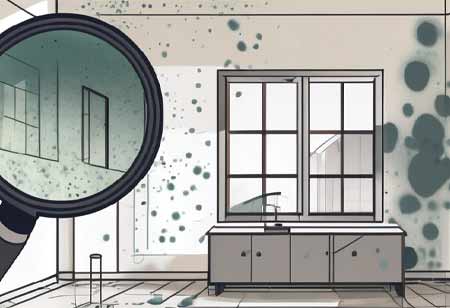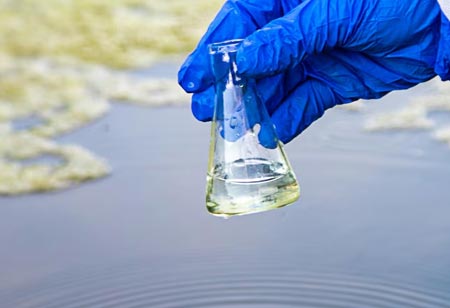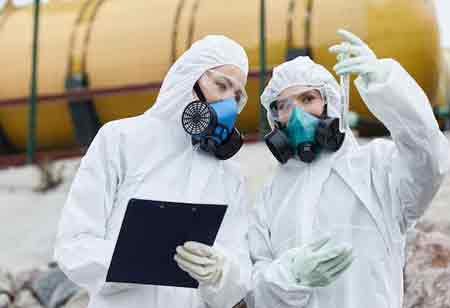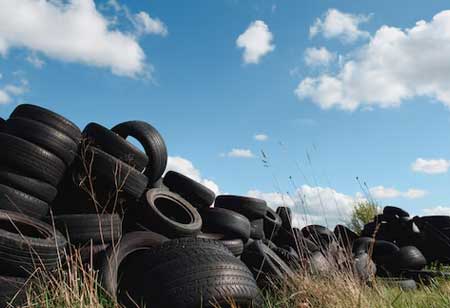Thank you for Subscribing to Environmental Business Review Weekly Brief
Safeguarding Indoor Environments with Reliable Mold Remediation
Mold has emerged as a persistent challenge in residential and commercial settings, but its impact can be particularly severe in largescale operations.

By
Environmental Business Review | Friday, January 17, 2025
Stay ahead of the industry with exclusive feature stories on the top companies, expert insights and the latest news delivered straight to your inbox. Subscribe today.
Mold has emerged as a persistent challenge in residential and commercial settings, but its impact can be particularly severe in largescale operations. Whether businesses deal with massive office complexes, industrial warehouses, or retail spaces, mold can signal serious environmental and health concerns. Mold spores are known for their resilience and can grow rapidly under the right conditions, especially when there is moisture, warmth and insufficient ventilation. For companies looking to maintain safe working conditions, uphold regulatory compliance and safeguard their reputation in the marketplace, mold remediation services have become an indispensable facet of environmental management.
Mold growth is often triggered by water leaks, flooding, or excessive humidity indoors. Once mold begins to thrive, the danger is not limited to its unsightly stains or musty odors. The fungal spores can aggravate allergies, trigger respiratory problems and sometimes contribute to long-term health complications. Individuals with weakened immune systems or pre-existing conditions like asthma are particularly vulnerable. As awareness about indoor air quality has increased, stakeholders are more vigilant about containing and eliminating mold as soon as it is detected. For businesses, this awareness translates into higher expectations from employees, customers and health officials. It is essential to engage professional mold remediation services that deliver thorough inspections, effective containment and reliable removal practices.
Mold remediation specialists play a vital role in diagnosing and solving these problems. The first step generally involves a comprehensive assessment, which begins with identifying the type and extent of the mold infestation. This investigation is not just a matter of spotting visible signs; experts often conduct air testing, surface sampling and use specialized equipment such as hygrometers and infrared cameras to detect moisture behind walls and under floors. Pinpointing the water source is integral to ensuring that once the mold is removed, it does not return. The complexity of this process speaks to the importance of hiring reputable firms that possess the experience and tools required to deliver effective results.
Once the scope is determined, containment strategies are typically employed to prevent the spread of mold spores during the remediation process. Negative air pressure chambers and physical barriers can isolate contaminated areas, ensuring mold spores do not drift into clean zones. Depending on the infestation’s severity, removing and replacing sections of drywall, insulation, ceiling tiles, or flooring may be necessary. The emphasis on containment and careful removal underscores the risks of attempting do-ityourself fixes, which can lead to further distribution of spores if not handled correctly. For businesses operating large facilities, rigorous containment methods are essential to minimize downtime and reduce the potential spread of mold throughout the property.
Thorough cleaning and decontamination are equally critical. High-efficiency particulate air (HEPA) vacuums, specialized biocides and antimicrobial treatments are routinely used to eradicate mold colonies and ensure surfaces are treated against regrowth. Once contaminated materials have been removed, the disposal process must be managed according to industry best practices and local regulations. Any oversight in handling these materials can introduce additional environmental and health hazards. Hence, professional mold remediation companies often employ certified technicians, ensuring each stage of the process adheres to stringent guidelines from agencies such as the Environmental Protection Agency (EPA) and the Occupational Safety and Health Administration (OSHA).
Mitigation is not the final step, as post-remediation verification is an important conclusion. By testing air quality and ensuring moisture readings are within recommended parameters, the remediation service can confirm that the area is safe for reoccupancy and that the potential for mold regrowth has been mitigated. This comprehensive evaluation offers business owners and property managers the sought-after peace of mind. It also provides documentation to regulators, insurance providers and other stakeholders that proper procedures were followed, thereby reducing liability concerns.
In the modern landscape of sustainability and environmental responsibility, mold remediation resonates as a crucial component of a broader commitment to indoor air quality and occupant wellbeing. A proactive approach helps companies address potential structural and health hazards before they develop into costly complications. Professional remediation services can advise on improving ventilation, installing dehumidifiers and implementing preventive maintenance practices that target the root causes of mold formation. By prioritizing a healthy work environment, companies are also signaling an investment in employee productivity and satisfaction, as poor indoor air quality can affect morale and contribute to absenteeism.
There are also economic advantages to addressing mold swiftly and thoroughly. Prolonged mold exposure can damage a facility’s structural elements, leading to expensive repairs if left unaddressed. In addition, if customers or employees discover mold issues that appear to be neglected, a business may face reputational damage. In some industries, such as hospitality or healthcare, visible mold issues can trigger public relations crises, erode trust and result in legal and financial repercussions. By involving professional remediation services, businesses protect their brand image and demonstrate a serious commitment to environmental health and safety.
The growth trajectory for mold remediation services is poised to continue expanding as businesses prioritize healthier indoor environments and climate change intensifies extreme weather events that exacerbate moisture issues. From an environmental perspective, proper mold remediation aligns with a responsible approach to resource management. It ensures that contaminated materials are disposed of in line with environmental guidelines while preventing avoidable waste through regular inspection and maintenance.
As the challenges associated with mold persist, so does the need for specialized, professional interventions that bring technical expertise and a holistic understanding of building science, workplace safety and environmental stewardship. For businesses of all sizes, mold remediation services can be viewed as a wise investment that protects property, promotes occupant health and upholds a standard of excellence in environmental management. Ultimately, by embracing a thorough and strategic remediation process, enterprises are better equipped to maintain sustainable operations while fulfilling their obligations to employees, customers and the communities they serve.





